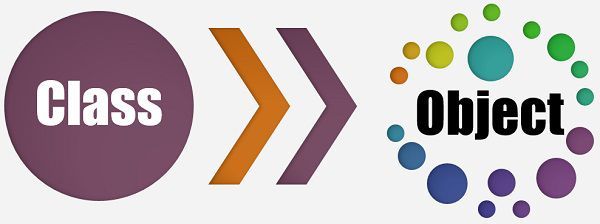 The class is a technique used to bind data and its associated functions together, in contrast, Object is the created instance of a class. The object and class are the terms mainly used in object-oriented programming through which data is organized in the form of objects to reduce the code and application complexity.
The class is a technique used to bind data and its associated functions together, in contrast, Object is the created instance of a class. The object and class are the terms mainly used in object-oriented programming through which data is organized in the form of objects to reduce the code and application complexity.
Objects change their state through the exposed methods and communicate with those methods. On the contrary, classes are passive and do not pass messages but used to create objects. A class is also known as a collection of the alike type of objects. The substantial difference between object and class is also shown below in the comparison chart.
Content: Object Vs Class
Comparison Chart
| Basis for comparison | Object | Class |
|---|---|---|
| Definition | An instance of a class is known as Object. | A template or blueprint with which objects are created is known as Class. |
| Type of entity | Physical | Logical |
| Creation | Object is invoked by new keyword. | Class is declared by using class keyword. |
| Memory allocation | Creation of object consumes memory. | The formation of a class doesn't allocate memory. |
Definition of Object
The object is an instance of a class. Objects in C++ can be illustrated as variables of user-defined datatype and also sometimes called an instance variable. Each object has some associated value or a certain type. An object is invoked using the class name.
For example, a university can be a class, and the teachers of the university are the objects. In the above example, the university is just a plan which governs the working of a university but the working bodies in the university are the teachers, headmaster, director and others are the specific people with a specific designation which are the members of the class university.
Computer’s memory is used to store these object which embodies the precise features of its class. The advantage of using an object is that it provides a technique to build new user-defined data types.
To understand object let’s create a class and its object.
#include<iostream>
using namespace std;
class cube
{
int a;
public:
void values (int);
int volume()
{
return (a*a*a);
}
};
void cube::values(int x)
{
a=x;
}
int main()
{
cube c;
c.values (10);
cout<<"The volume of the cube is "<<c.volume();
return 0;
}
//Output
The volume of the cube is 1000
Definition of Class
The class is used to attach data and its associated functions together. It enables data hiding if required, from external use. A class behaves as a new abstract data type that is served as any other built-in data type which are present in almost all programming languages.
For example, int data type in C++ is a built-in data type which can be used to declare as many variables as required. In a similar way, a class also serve as a blueprint or a plan which describe what data and functions are involved in an object of a class. The declaration of a class does not invoke any object just as the declaration of int data type does not form any variable. A class is used to declare objects.
Class specification involves two parts: class declaration and class function definitions.
- The class declaration specifies the scope and type of its members.
- A class function definition specifies the implementation of the class function.
Here also let’s create a class named as sphere.
class cube
{
int side;
public:
void values (int);
int volume (void);
}
Key Differences Between Object and Class
- The Class is the collection of the similar kind of objects whereas an object is the instantiation of a class.
- The objects are said to be the physical entity used in a program for some specific purpose. On the other hand, the class is considered a logical entity used to bind data and functions.
- An object is declared by using keyword new. As against, a class is declared using class keyword.
- In a program, the class doesn’t consume any storage memory while object does allocate memory.
Conclusion
An object reserves its state or information in attributes of a class and exposes their behaviour at the time of its instantiation along with invoked methods. The data encapsulation is implemented in programming using the concept of an object. On the other hand, a group of the related type of objects is known as a class which share common attributes and methods. The defined attributes and operations in a class are not intended for the class itself instead it is for the objects of a class.
Sixmund kapinga says
I have enjoyed your attachment
Congratulation to you try to send me some material through my e mail